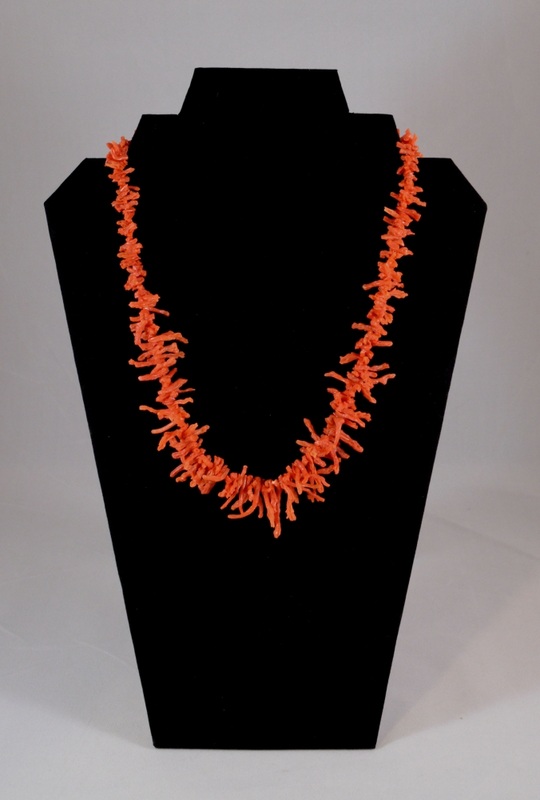Learn About the Art > Learn About the Materials > About Coral
About Coral (All Kinds)
|
About Mediterranean Coral:
Mediterranean Coral is used by Native American jewelers and Zuni fetish carvers in a variety of ways. In Navajo jewelry, when one sees a red "stone" setting, it is usually Mediterranean coral. The photo of the Navajo bracelet demonstrates an example of the beautiful, high-quality Mediterranean coral that is used in fine jewelry. This coral is also sometimes strung in its natural coral form, or can be cut and polished into uniform bead sizes (see photos at left). When strung in its natural coral form, it is much more delicate and susceptible to damage, so the wearer must take extra care as to not crush the coral pieces. For the polished beads, it is important to verify the authenticity of the beads, as red plastic beaded necklaces sometimes are sold on the market as "coral necklaces." (Matt Wood's AAIA, Inc. guarantees 100% authenticity of each item purchased through its gallery). Mediterranean coral has been harder and harder to come by in the past couple of decades. In 1992, a ban was placed on the mining and collecting of coral, in response to the widespread destruction of coral reefs (note: this does not apply to apple coral, see below). As a result, it is rare for a jeweler today to find available Mediterranean coral to set into his/her new pieces. (Coral is often taken out of older pieces when possible). Each beautifully crafted piece of Native American jewelry incorporating Mediterranean Coral is a treasure, and when a piece becomes available on the market, it is usually purchased in a very short period of time. In Zuni jewelry, Mediterranean coral is usually used in smaller stone settings, or as inlay in smaller mosaics or channels. In Zuni fetish carvings, one usually sees Mediterranean coral used as ornamentation, as inlay on a fetish's body, or strung as beads on sinew to secure and adorn a Zuni fetish's power or gift pack on its back. |
|
About Apple Coral:
Apple Coral is generally most often seen used in Zuni fetish carvings, though it can also be used in Native American jewelry. Apple coral was not part of the ban on coral mining and collecting passed in 1992 in response to the widespread destruction of coral reefs, and so it is this coral that we generally see used in abundance in contemporary works. It has a distinct appearance, with a tiger-like striation of color (see examples, to left). It is a melithaea sponge material, commonly found on ocean floors around Taiwan, Indonesia and southern China. Much of the contemporary jewelry with red coral that we see on today's market, as well as contemporary Zuni carvings, are made with Apple coral. |





